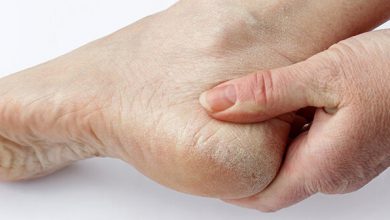Affective Flattening: What Is It And Why Does It Occur?

Affective flattening defines the inability to express emotions and feelings. It is a type of indifference in emotional matters that occurs as a symptom of underlying disorders.
Joy no longer appears in situations of relaxation, fear does not appear, there is no sadness or anger. Only the coldness, the emptiness and the absence of expression are evident.
The psychopathological phenomenon can be the result, in certain cases, of schizophrenia. However, there are many other conditions that can explain it. Let’s dive into it.
Symptoms of affective flattening
It is true that each of us react to stimuli and experiences in a specific way. There are those who are more expressive and there are also those who are colder. However, this clinical reality outlines the symptom of some mental illness or disorder. It is important to request an assessment as soon as possible to know the cause that originates the situation.
The affective flattening is a psychological phenomenon as striking as it is disabling. People are emotional creatures who reason and emotions are our most important language. Not showing them and, what is worse, not feeling them, already shows some kind of problem.
Among the main symptoms we can mention the following:
- People feel dull and anesthetized. What happens in their environment does not attract their attention and they are indifferent to any experience that, in normal cases, would arouse some emotion.
- Speech loses musicality, there is no intonation. Communication is flat, similar to that of a robot.
- Absence of eye contact. They do not look us in the eye when we speak to them.
- There is also a total absence in the expressiveness of the face.
- Lack of non-verbal language. That is, the body does not show emotions either.
Although some of these patients are unable to show emotional expressiveness, they do recognize it in others. People with schizophrenia, for example, can tell if someone else is happy or sad. On the other hand, those who suffer from depression are unable to do so.

Causes and conditions related to affective flattening
The triggers of affective flattening can be multiple. However, as we pointed out at the beginning, they are relatively important conditions that must be diagnosed and treated early.
Side effect of treatment for depression
A study carried out at the neuroimaging and psychiatry research unit at the University of Orsay (France) provides us with interesting information. The affective flattening is related to an alteration in the dopaminergic function. Sometimes, certain antipsychotic drugs and some antidepressants can bring it as a side effect.
This can occur in antidepressants given for major depression and anxiety disorders. However, experts tell us that they are specific cases and that it is not something common.
Schizophrenia
Schizophrenia is a disease of great impact and seriousness. Delusions, hallucinations, disorganized thinking, impulsive behaviors, suicidal ideation. The symptomatology is as problematic as it is devastating for those who suffer from it.
Thus, one of the manifestations of this serious mental disorder is emotional flattening. In the diagnostic criteria of the “Diagnostic and Statistical Manual of Mental Disorders” (DSM-V) it is established that the so-called negative symptoms must appear . They are those that show the lack or absence of some capacity.
Dementias or neurodegenerative diseases
An example of those neurodegenerative disorders and diseases in which emotional indifference appears is Parkinson’s. Research works, such as the one carried out at the San Carlos Clinical University Hospital (Spain) show us that, in addition to motor problems, there are psychological and emotional problems.
Autism spectrum disorder (ASD)
Autism spectrum disorder (ASD) can manifest itself in multiple ways. There are fully functional people who lead normal lives, such as those with Asperger’s syndrome. Now, we can also see cases in which there is a lack of communication, serious limitations in social skills and stereotyped behaviors with affective flattening.
Traumatic brain injury
Traumatic brain injuries are the consequence of serious accidents and ischemia, stroke and any type of cerebrovascular accident. These are high-impact situations in which, in addition to this indifference in emotional matters, other symptoms appear, such as memory problems and communication or movement difficulties.
What is the treatment for emotional flattening?
The treatment associated with emotional flattening will always depend on the disorder that is causing it. It should be noted that most of them are serious clinical realities that will lead to chronic approaches.
Today we have atypical antipsychotics, a new generation of drugs that also influence other neurotransmitters in the brain to improve emotional expressiveness. Parkinson’s, meanwhile, is treated with levodopa. As far as ASD is concerned, medication will help regulate patients’ energy as well as concentration.

Does affective flattening have future consequences?
Treatment of affective flattening is challenging. It all depends on the disorder that causes it and, in certain cases, it is difficult to achieve an absolute resolution. Schizophrenia is a chronic and degenerative disease, like Parkinson’s.
However, patients who have suffered strokes or brain injuries can see remarkable advances thanks to neurorehabilitation.
The inability to express emotions, to show what it feels like or to react to what is happening in the environment is a reflection of a clinical reality that tends to be serious. It is important to seek expert help as soon as there is evidence of emotional dysfunction.
On the other hand, if we have a close person with Parkinson’s or autism spectrum disorder, we must understand what their reality is. Understanding makes us understand why they act as they do and this facilitates coexistence and treatment. Let us never hesitate to consult with specialized professionals.









